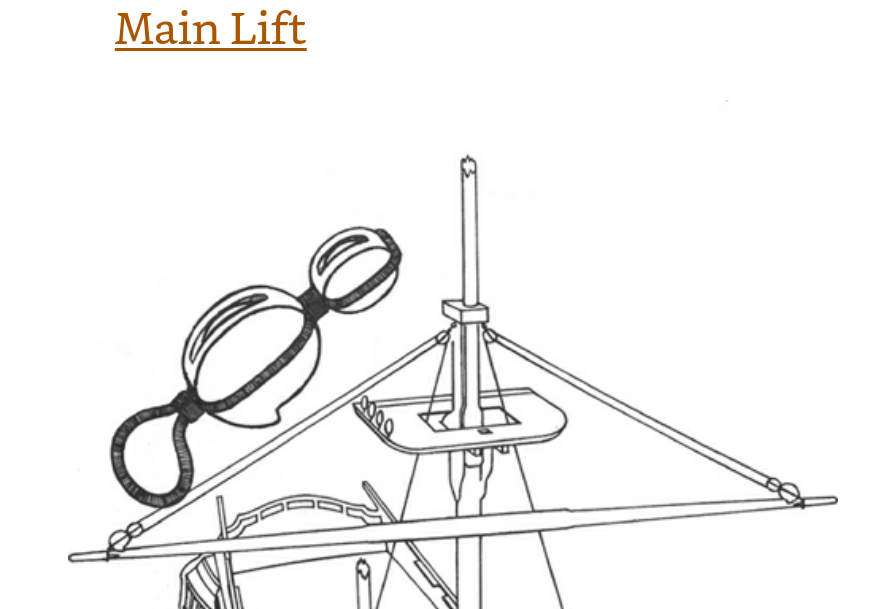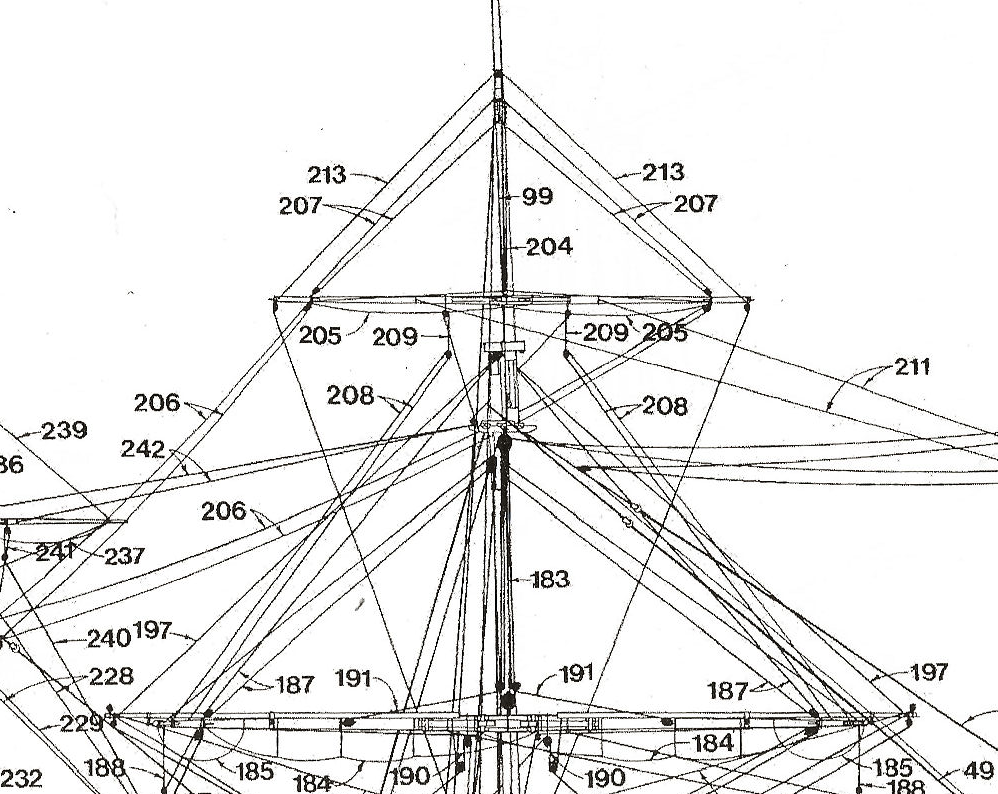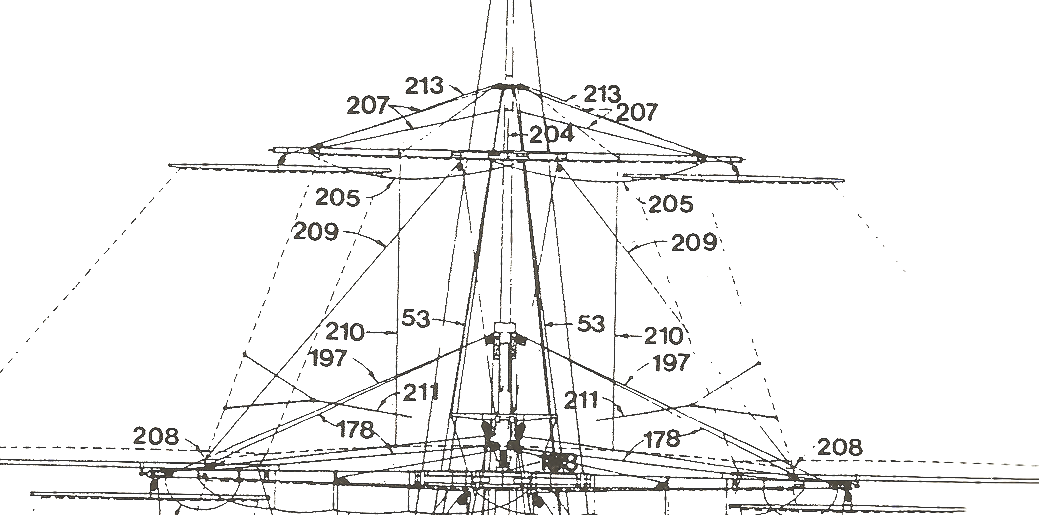
rraisley
Members-
Posts
80 -
Joined
-
Last visited
Profile Information
-
Gender
Male
Contact Methods
-
Yahoo
email: rraisley@bellsouth.net
Recent Profile Visitors
-
La Couronne by majq - Mantua - 1:98
rraisley replied to majq's topic in - Kit build logs for subjects built from 1501 - 1750
Just ran across this thread from a link on Pinterest, and so glad I did. Wonderful build! Just the kind of model I'd love to build, but probably couldn't. Great work! -
 DaveBaxt reacted to a post in a topic:
Stunsail Booms and The Rest
DaveBaxt reacted to a post in a topic:
Stunsail Booms and The Rest
-
 jayaero1 reacted to a post in a topic:
HMS Victory CAD Model Research Project
jayaero1 reacted to a post in a topic:
HMS Victory CAD Model Research Project
-
You may have seen these advertised on eBay: small Stern- and Mid-Sections (maybe Fore- as well) ship sections in 1:128 scale (pretty much fit in your hand) and are basic structural sections without a lot of detail. They interest me, looking for a new but simple project to work on. I know they are made in China, and know the opinion here about knock-offs, but don't see that they are copies of any other model. On eBay they sell for about $80 or so each, and are definitely shipped from China. I think I've seen Chinese sites offer them direct at lower prices, but they use the same photos, so if they both come from China, I would expect them to be identical kits and not, again, knock-offs. But I don't know that. I searched here and found nothing, but was wondering 1) If there are thoughts against these types of kits, assuming they are /not/ knock-offs, and 2) Has anyone seen any or had any experience with them? I could post links and pics, but haven't (yet) in case these kits are considered "no-no's".
-
 Jorge Diaz O reacted to a post in a topic:
Mast Lengths and their above deck heights for HMB Endeavour
Jorge Diaz O reacted to a post in a topic:
Mast Lengths and their above deck heights for HMB Endeavour
-
Just amazing. Can I ask what kind of tools you use to carve such intricate detail so smoothly? Maybe miniature elves with lasers?
-
Rigging Confusions - Lifts, Halyards and More, Oh My!
rraisley replied to rraisley's topic in Masting, rigging and sails
Good to know, and makes sense. Thanks. -
Rigging Confusions - Lifts, Halyards and More, Oh My!
rraisley replied to rraisley's topic in Masting, rigging and sails
Looks like the other blocks might be for the sheets & cluelines. -
Rigging Confusions - Lifts, Halyards and More, Oh My!
rraisley replied to rraisley's topic in Masting, rigging and sails
Peterson's book has the below illustration for the Main Lifts: The enlarged view of the block(s) seems to show a single block attached to a larger block. But I see no reason at all for the larger block in the rigging. Can someone tell me what it's for? What lines should go through it? -
I took the easy way out and used 1/16" wide auto striping tape. I tried some graphic tape first, but it didn't stick well enough. I painted my mast yellow first, and then applied a gloss spray coat, to which the tape will stick (it won't stick at all on dull paint}. I then sprayed the mast, including the tape, with Dull Coat, figuring/hoping it would help seal the edges of the tape and help adhere it in place. I think it looks good and expect it will last as long as I will on my model.
-
Rigging Confusions - Lifts, Halyards and More, Oh My!
rraisley replied to rraisley's topic in Masting, rigging and sails
So I see. There are a few pages that are helpful, and at least they usually show where the lines terminate. -
Rigging Confusions - Lifts, Halyards and More, Oh My!
rraisley replied to rraisley's topic in Masting, rigging and sails
I just purchased an electronic Kindle copy of Petersson's book. I have also promised myself it is the last book I will buy in attempting to build this model. When lines shown by authorities' drawings are "bogus", and when line descriptions here, and in the books, require a Google search by me for every other word (and conflict with other "authorities"), I think a visual representation which I can use while looking at diagrams, and fitting them to my situation, is best for me. Thanks to everyone for your responses. -
I can definitely appreciate what you're trying to do. The last ship model I completed was the Popular Mechanics Chebec, when I was 16. It took me a year (a lot of time when your friends are out dating), and 60 years and 10 moves later has gone the way of the trash. Even then, it was simplified, due to my limited tools and budget (never could afford all the cannon). I got my Victory cross-section model over 30 years ago, and it's not done. I bought the Corel (?) Berlin in between, and was smart enough to realize I would never finish it. I've seen finished, imported models on eBay (an example is a Victory cross-section), that finished, costs less than I paid for my Victory kit (not counting hundreds of dollars of add-ons and tools). I hope my Victory, assuming I finish it, will surpass the imported finished model, and I have seen some imported models, and the craftsmanship is not very good. But sitting on a shelf in the store, or a mantel at home, it is just as impressive. The more I see of the level of craftsmanship displayed here, the more I realize my result will be closer to the imported model than to what others do here. But I am enjoying it. And I'm spending time, even for this model, that NO ONE will ever appreciate that sees the finished product. No matter the model, if you enjoy building it and are happy with the result, just do it. Your way. The way you want to, simplified, partly built or whatever. I know my model would never be admired by sophisticated modelers; but unless I post it here, they'll never get to see it. My friends think it looks good (not knowing it from a plastic, pre-painted kit), and it will look good to me. At least from a distance. And if it doesn't, I just back up a little further. 😉
-
Rigging Confusions - Lifts, Halyards and More, Oh My!
rraisley replied to rraisley's topic in Masting, rigging and sails
I have Longridge's book, and have removed the rigging diagrams for reference. They have yet another version of the above information (similar for Lifts, short Halyards, if indeed that is what they are stopping at the main topgallant yard. Again - added confusion. The cheapest I see it is $75. I just bought Wolfram zu Mondfeld's Historic Ship Models, and it has lots of great detail, but doesn't really answer a lot of my questions. Also bought Longridge's book as noted above, McGowan's HMS Victory, McKay's Victory book, etc. and am not getting far. Additional, conflicting yet incomplete information is not really helping. -
I'm trying to start on the rigging of my Corel Victory cross-section, and think the rigging described and shown in the kit is rather simplistic (despite the fact that I still can't figure it all out), and so I've looked at maybe a dozen sources, and in many ways, am more confused now. I want to plan the rigging ahead of time, attach the appropriate blocks and connections to the correct places, prior to running thread all over. I'm starting with the simple topgallant yard, by far the simplest, and I'm already confused. I'm showing portions of two rigging diagrams in McKay's book, which seems a good start: Using the table in the book, 207 are the Lifts for the Main Topgallant Yard, and consist of 2 blocks and 4 thimbles (I assume single, and that quantities are each side, with the quantities of this Lift being 2). I believe there will be a single block where the lift attaches to the yard, and another attached to the mast, where the rope will then continue downward. I guess there would be a thimble where the rope attaches to the mast, then another connecting the block to the yard and a third connecting the second block to the mast; I have no idea where a fourth thimble would be. As to the rope going down, would it go to all the way down to belaying pins at the base of the main mast, or would it be connected somewhere between? The 2.5" rope is listed as 65 fathoms long, so probably at the deck? In the same area in this diagram are item 213, called the Halyard. It is 2" rope 84 fathoms in length with 6 blocks! Each side! Well, that short piece of rope between the mast and the yard is no 84 fathoms long, so it must continue down through a block attached to the end of the spar, back toward the Top. But where would it go from there? Where are the other 5 blocks? Why isn't this line shown on the second diagram above? (And it's not shown at all on the model's plans. And also not at all on some apparently excellent models I've seen.) While at first they seem to do the same thing (hold the topgallant yard in place), I realize that the Halyard line does not actually hold the yard, as it (probably) goes through a block on the yard. You can see my level of confusion here: with only these first 2 lines, I don't know how they attach or where they go, and sources for this information varies. And confusion compounds as I go lower on the main mast, with so many more lines, whose function and connection are even more confusing. I hate to leave my cross-section model at only the hull and decks, or with a bare main mast, but I've spent over a month researching and buying books and am getting nowhere.
-
That makes a lot of sense. So the only thing I would model might be some eyes on the boom to connect the tackle. Actually, just one eye on the inner end would work.
About us
Modelshipworld - Advancing Ship Modeling through Research
SSL Secured
Your security is important for us so this Website is SSL-Secured
NRG Mailing Address
Nautical Research Guild
237 South Lincoln Street
Westmont IL, 60559-1917
Model Ship World ® and the MSW logo are Registered Trademarks, and belong to the Nautical Research Guild (United States Patent and Trademark Office: No. 6,929,264 & No. 6,929,274, registered Dec. 20, 2022)
Helpful Links
About the NRG
If you enjoy building ship models that are historically accurate as well as beautiful, then The Nautical Research Guild (NRG) is just right for you.
The Guild is a non-profit educational organization whose mission is to “Advance Ship Modeling Through Research”. We provide support to our members in their efforts to raise the quality of their model ships.
The Nautical Research Guild has published our world-renowned quarterly magazine, The Nautical Research Journal, since 1955. The pages of the Journal are full of articles by accomplished ship modelers who show you how they create those exquisite details on their models, and by maritime historians who show you the correct details to build. The Journal is available in both print and digital editions. Go to the NRG web site (www.thenrg.org) to download a complimentary digital copy of the Journal. The NRG also publishes plan sets, books and compilations of back issues of the Journal and the former Ships in Scale and Model Ship Builder magazines.




